
The South Bruny National Park is a national park located on Bruny Island, Tasmania, Australia, about 50 kilometres (31 mi) south of Hobart. The park contains the Cape Bruny Lighthouse. The highest point of the park is Mount Bruny at 504 metres (1,654 ft).
This is an index of conservation topics. It is an alphabetical index of articles relating to conservation biology and conservation of the natural environment.
Ex situ conservation literally means, "off-site conservation". It is the process of protecting an endangered species, variety or breed, of plant or animal outside its natural habitat; for example, by removing part of the population from a threatened habitat and placing it in a new location, an artificial environment which is similar to the natural habitat of the respective animal and within the care of humans, example are zoological parks and wildlife safaris. The degree to which humans control or modify the natural dynamics of the managed population varies widely, and this may include alteration of living environments, reproductive patterns, access to resources, and protection from predation and mortality. Ex situ management can occur within or outside a species' natural geographic range. Individuals maintained ex situ exist outside an ecological niche. This means that they are not under the same selection pressures as wild populations, and they may undergo artificial selection if maintained ex situ for multiple generations.

The African penguin, also known as the Cape penguin or South African penguin, is a species of penguin confined to southern African waters. Like all extant penguins, it is flightless, with a streamlined body and wings stiffened and flattened into flippers for a marine habitat. Adults weigh an average of 2.2–3.5 kg (4.9–7.7 lb) and are 60–70 cm (24–28 in) tall. The species has distinctive pink patches of skin above the eyes and a black facial mask. The body upperparts are black and sharply delineated from the white underparts, which are spotted and marked with a black band. The pink glands above their eyes help them with thermoregulation. To cope with changing temperatures, blood is sent to the glands to be cooled by the air.

Bardsey Bird and Field Observatory is a bird observatory on Bardsey Island, off the Welsh coast.
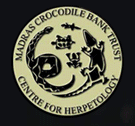
The Madras Crocodile Bank Trust and Centre for Herpetology (MCBT) is a reptile zoo and herpetology research station, located 40 kilometres (25 mi) south of the city of Chennai, in state of Tamil Nadu, India. The centre is both a registered trust and a recognized zoo under the Wildlife (Protection) Act, 1972 and comes under the purview of the Central Zoo Authority, Ministry of Environment and Forests, Government of India. It was established with the aim of saving three Indian endangered species of crocodile—the marsh or mugger crocodile, the saltwater crocodile, and the gharial, which at the time of founding of the trust were all nearing extinction.

The Indian Ocean Commission is an intergovernmental organisation that links African Indian Ocean nations: Comoros, Madagascar, Mauritius, Réunion, and Seychelles. There are also seven observers: China, the European Union, the Organisation internationale de la Francophonie, the Sovereign Order of Malta, India, Japan and the United Nations.
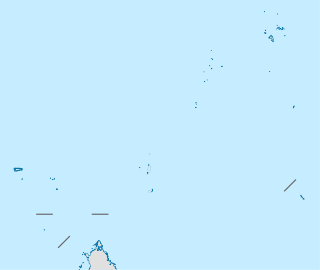
Cousin Island is a small granitic island of the Seychelles, lying 2 km (1.2 mi) west of Praslin. It is a nature reserve protected under Seychelles law as a Special Reserve. It is managed by Nature Seychelles, a national nonprofit organization and Partner of BirdLife International, by which it has been identified as an Important Bird Area.

The flesh-footed shearwater is a medium-sized shearwater. Its plumage is black. It has pale pinkish feet, and a pale bill with a distinct black tip. Together with the equally light-billed pink-footed shearwater, it forms the Hemipuffinus group, a superspecies which may or may not have an Atlantic relative in the great shearwater. These large shearwaters are among those that have been separated into the genus Ardenna. Recent genetic analysis indicates evidence of strong divergence between Pacific colonies relative to those in South and Western Australia, thought to be explained by philopatry and differences in foraging strategies during the breeding season.
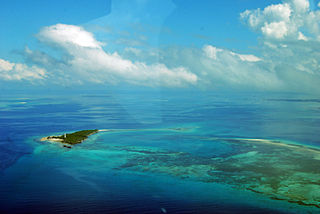
Chumbe Island is a small privately owned island a few kilometres off the main island of Zanzibar, known for its ecological innovation and exceptional coral reefs.

The World Association of Zoos and Aquariums (WAZA) is the "umbrella" organization for the world zoo and aquarium community. Its mission is to provide leadership and support for zoos, aquariums, and partner organizations of the world in animal care and welfare, conservation of biodiversity, environmental education and global sustainability.

The Cheetah Conservation Fund is a research and lobby institution in Namibia concerned with the study and sustenance of the country's cheetah population, the largest and healthiest in the world. Its Research and Education Centre is located 44 kilometres (27 mi) east of Otjiwarongo. The CCF was founded in 1990 by conservation biologist Laurie Marker who won the 2010 Tyler Prize for her efforts in Namibia.

Marine conservation activism is the efforts of non-governmental organizations and individuals to bring about social and political change in the area of marine conservation. Marine conservation is properly conceived as a set of management strategies for the protection and preservation of ecosystems in oceans and seas. Activists raise public awareness and support for conservation, while pushing governments and corporations to practice sound ocean management, create conservation policy, and enforce existing laws and policy through effective regulation. There are many different kinds of organizations and agencies that work toward these common goals. They all are a part of the growing movement that is ocean conservation. These organizations fight for many causes including stopping pollution, overfishing, whaling and by-catching, and supporting marine protected areas.
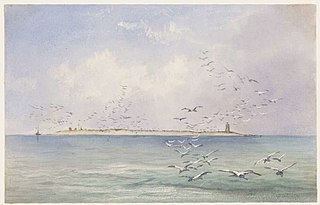
Raine Island is a vegetated coral cay 32 hectares in total area situated on the outer edges of the Great Barrier Reef off north-eastern Australia. It lies approximately 620 km (390 mi) north-northwest of Cairns in Queensland, about 120 kilometres (75 mi) east-north-east of Cape Grenville on the Cape York Peninsula.
The Peregrine Fund is a non-profit organization founded in 1970 that conserves threatened and endangered birds of prey worldwide. The successful recovery in the United States of the peregrine falcon, which was removed from the U.S. Endangered Species List in 1999, enabled the organization to expand its mission to include other endangered raptors around the world. The Peregrine Fund is headquartered at its World Center for Birds of Prey in Boise, Idaho, on a 580-acre (2.3 km2) campus with breeding and research facilities, an administrative office, interpretive center, research library, and archives.

Earthwatch Institute is an international environmental charity founded as Educational Expeditions International in 1971 near Boston (USA) by Robert A. Citron and Clarence Truesdale, then superintendent of Vermont public schools. It is one of the largest global underwriters of scientific field research in archaeology, paleontology, marine life, biodiversity, ecosystems and wildlife. For over forty years, Earthwatch has delivered a unique citizen science model to raise funds and recruit individuals, students, teachers and corporate fellows to participate in critical field research to understand nature's response to accelerating global change. Earthwatch's work supports hundreds of Ph.D. researchers across dozens of countries, conducting over 100,000 hours of research annually.
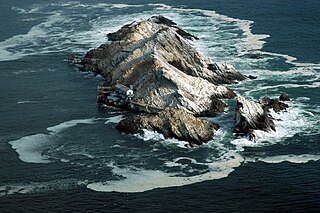
Mercury Island is a small rocky island off The Diamond Coast, Namibia. Despite its small size it is recognised by BirdLife International and other global conservation groups as an Important Bird Area (IBA) for its important coastal seabird breeding.

The Tonlé Sap Biosphere Reserve is a unique ecological phenomenon surrounding the Tonlé Sap or Great Lake of Cambodia. In 1997, it was successfully nominated as a UNESCO Biosphere Reserve.
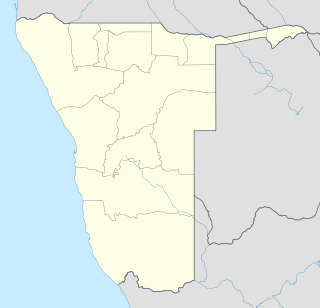
Ichaboe Island is a small rocky island off Namibia's Diamond Coast. It is recognised by BirdLife International as an Important Bird Area (IBAs) for its seabird breeding colonies.
The marine protected areas of South Africa are in an area of coastline or ocean within the exclusive economic zone (EEZ) of the Republic of South Africa that is protected in terms of specific legislation for the benefit of the environment and the people who live in and use it. An MPA is a place where marine life can thrive under less pressure than unprotected areas. They are like underwater parks, and this healthy environment can benefit neighbouring areas.
















